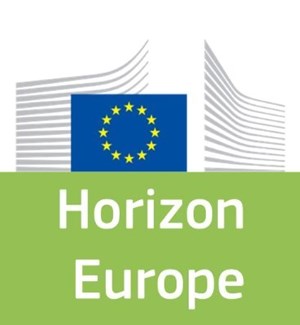- Flanders Research Institute for Agriculture and Fisheries (ILVO) - Belgium,
- Institut Français de Recherche pour l'Exploitation de la Mer (IFREMER) - France,
- SINTEF Ocean AS - Norway,
- Norwegian Institute for Air Research (NILU) - Norway,
- Flanders Marine Institute (VLIZ) - Belgium,
- University of Malta (UM) - Malta,
- University of Gothenburg (UGOT) - Sweden,
- Helmholtz-Centre for Environmental Research (UFZ) - Germany,
- University College Cork - Ireland,
- Instituto Español de Oceanografía (IEO) - Spain,
- Tallinn University of Technology (TalTech) - Estonia,
- McGill University - Canada,
- Merinov - Canada
The Andromeda project brings together an international research partnership that combines the expertise and competencies of 15 international research institutes. The project aims to gain knowledge about the degradation of microplastics while further advancing in-field of analyses of both; micro- and nanoplastics. The cost-effectiveness of analyses as well as the need for advanced analysis techniques will be considered, and challenging types of microplastics, such as microfibers, tyre wear particles, and paint flakes among others, will be assessed. To date, very little is known about the degradation processes of microplastics. It is therefore the aim of the Andromeda project to develop UV, hydrolytic, and thermo-oxidative methodologies to study accelerated plastic degradation in the laboratory, which will in turn establish a collection of partially degraded reference materials for further research applications. Comprehensive degradation studies will be undertaken to examine the mechanisms of UV and microbial degradation of microplastics in seawater and in marine sediments. Furthermore, the influence of parameters such as temperature, acidity and hyperbaric pressure will be investigated, with special attention being given to the leaching of chemical additives. To facilitate this, microplastic material will be immersed in coastal waters at a depth of 2000 meters for up to 12 months, and the resulting degraded materials will be distributed to project partners for further analyses and physicochemical characterisation. At the same time, hyperbaric conditions will be simulated under laboratory conditions to study the leaching of chemical additives. Chemical compounds will also play a key role in the development of a cost-effective methodological toolbox. Chemical markers that are suitable to replace the invasive sampling of organisms will be identified, consequently avoiding the sacrificing of animals in testing. Metals and organic additives will be tested as potential tracers. Partners specialised in communication, dissemination, and data management will ensure strong stakeholder involvement and efficient outreach of the project results. Communication activities will include the provision of factsheets to schools, social media engagement, a project website, and participation at national and international conferences. Interaction with the general public will take place via a smartphone app, which will be developed to engage citizens in the mapping of meso- and microplastics. Moreover, as another way of detecting mesoplastics and large microplastics at the water surface, hyperspectral imaging will be combined with the use of aerial drone imaging. This project is part of the 2nd call of JPI Oceans Joint Action 'Ecological Aspects of Microplastics'.
Want to analyze based on this project via our analysis tool? Analyze this project
Knowledge Gaps
Degradation
Environmental fate and behavior of plastic
Chronic or long-term effects, multiple forms and/or sources
Characteristics of plastic-general
Characterization test methods



